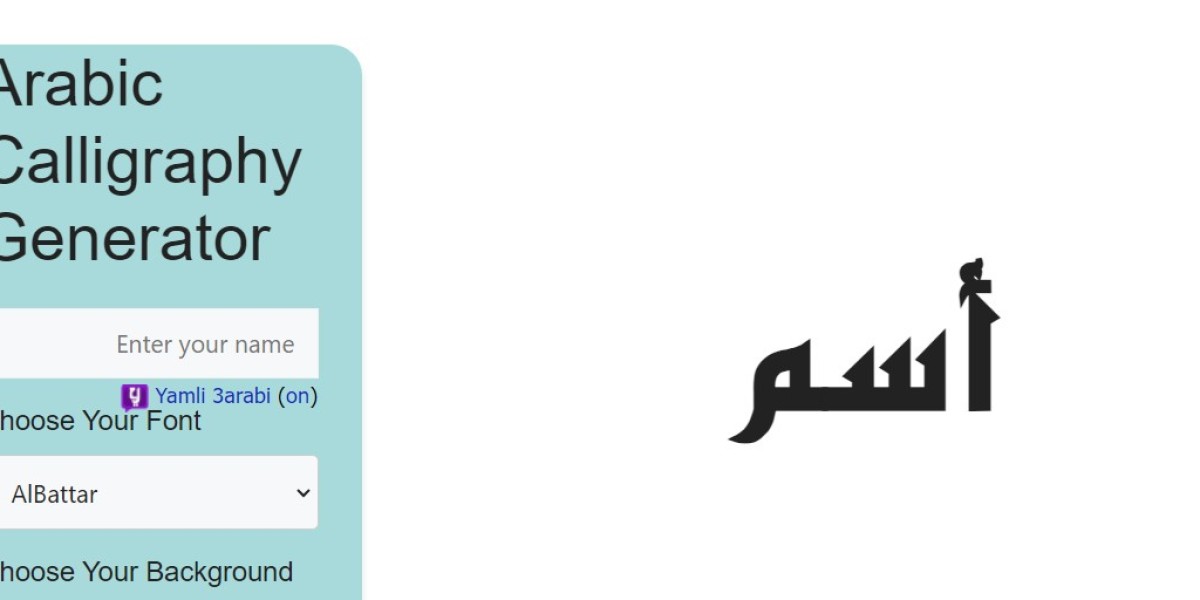Arabic calligraphy is one of the world’s oldest and most revered art forms, blending linguistic beauty with artistic elegance. Over the centuries, various unique calligraphy styles have emerged, each with its own distinct personality, structure, and cultural significance. Today, digital tools have made it easier than ever to create personalized Arabic calligraphy designs, allowing both professionals and beginners to explore this captivating art form.
The Evolution of Arabic Calligraphy Styles
The history of Arabic calligraphy dates back over a thousand years, evolving alongside the Islamic faith and culture. As Islam spread across the world, the Arabic language became a unifying factor for its followers, and the written word, particularly in its sacred form—the Quran—became a central element of Islamic identity. This gave rise to the importance of calligraphy, where the act of writing itself became a form of worship and artistic expression.
Over the centuries, different styles of Arabic calligraphy emerged to suit different cultural, artistic, and functional needs. Some of the most notable styles include:
Kufic: One of the earliest forms, Kufic is characterized by its geometric structure and bold, angular shapes. It is often used in architectural inscriptions and is highly recognizable for its aesthetic balance and symmetry.
Thuluth: A more decorative and cursive style, Thuluth is known for its large letters, elongated curves, and intricate detailing. This style is commonly seen in mosque decorations and religious manuscripts.
Diwani: This style originated during the Ottoman Empire and is known for its elaborate, flowing forms. Diwani is particularly suited for formal occasions and royal decrees due to its elegance and intricate appearance.
Naskh: A more practical and readable style, Naskh is often used in printed texts and everyday writing. It is simple yet graceful, making it one of the most widely used styles for both religious and non-religious content.
Each of these unique calligraphy styles has its own personality and visual appeal, allowing artists to choose the one that best suits the message or feeling they want to convey. The diversity of these styles makes Arabic calligraphy a versatile art form that can be adapted to various media, from handwritten manuscripts to digital graphic design.
Using Calligraphy for Personalized Art
One of the most exciting aspects of Arabic calligraphy is its ability to be personalized. Whether you’re creating a gift for a loved one, designing a custom logo, or making a piece of home decor, calligraphy adds a unique, artistic touch that makes the final product special.
With modern tools, personalizing Arabic calligraphy has never been easier. Calligraphy generators and digital design software allow you to input any text—such as a name, quote, or verse—and turn it into a stunning piece of art. These tools offer a wide variety of fonts and styles, enabling you to experiment with different looks until you find the perfect combination for your project.
When creating personalized calligraphy, it’s important to consider the following elements:
Script Style: The choice of calligraphy style should reflect the tone of the message. For example, if you’re creating a formal piece for a wedding or religious ceremony, a more elaborate style like Diwani or Thuluth may be appropriate. On the other hand, for a modern, minimalist design, Kufic or Naskh might be better suited.
Colors and Background: The colors you choose can greatly impact the overall feel of the artwork. Black and white designs tend to have a timeless, elegant look, while the use of bright colors can make the design more playful or eye-catching. Many digital tools allow you to experiment with various color schemes and backgrounds until you achieve the desired effect.
Personal Touches: Adding small personal elements, such as the recipient’s name or a meaningful symbol, can make the artwork even more special. Many digital calligraphy tools allow you to incorporate symbols, shapes, or additional text to further customize the design.
Benefits of Digital Calligraphy Tools
The rise of digital calligraphy tools has democratized access to Arabic calligraphy, making it possible for anyone to create beautiful, personalized designs. These tools offer several key benefits:
Ease of Use: Even if you have no experience with Arabic calligraphy, digital tools simplify the process by offering pre-designed fonts and styles. All you need to do is input your text, select a style, and customize it to your liking.
Variety of Styles: With a wide range of traditional and modern calligraphy styles at your fingertips, you can experiment with different looks and find the one that best suits your project.
Customization: Digital calligraphy tools allow you to easily adjust the size, color, and layout of your design. Whether you’re creating a minimalist piece or a highly detailed artwork, you have complete control over every aspect of the design.
High-Quality Outputs: Many calligraphy generators and design software allow you to export your finished work in high-resolution formats, making it suitable for printing, framing, or sharing online.
Creating Meaningful Gifts and Art
One of the most popular uses of Arabic calligraphy is in the creation of personalized gifts. Whether it’s for a wedding, anniversary, or religious holiday, a custom calligraphic design can be a meaningful and unique present. For example, many people choose to have a loved one’s name written in Arabic calligraphy and framed as a piece of art. Others opt for personalized messages or inspirational quotes rendered in elegant calligraphy.
Additionally, Arabic calligraphy can be used to create artwork for your home or office. Whether it’s a simple design featuring a favorite phrase or a more elaborate piece incorporating intricate details, calligraphy adds a timeless, artistic touch to any space.
Conclusion
Arabic calligraphy is a timeless art form that continues to inspire and captivate audiences around the world. With the availability of digital tools, anyone can now explore unique arabic calligraphy styles and create personalized designs for a variety of purposes. Whether you’re a professional designer or simply someone with a passion for art, Arabic calligraphy offers endless opportunities for creativity and self-expression. Dive into this rich tradition today, and discover the beauty of personalized calligraphic art.







